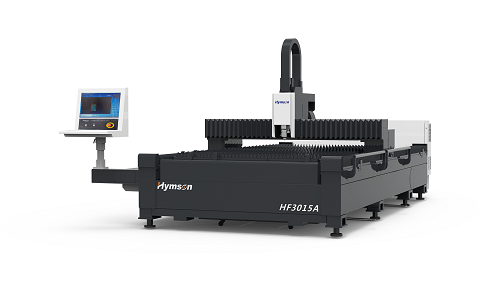在现代制造领域,精度和效率至高无上,推动着人们不断追求机械和工艺的创新。这一演变的核心是CNC 金属切割机——一种彻底改变金属制造的精密工具。让我们深入研究 CNC 金属切割机的复杂世界,探索它们的组件、工作原理、应用以及在当今工业领域中不可否认的重要性。
数控金属切割机的定义
CNC(计算机数控)金属切割机是一种可编程工具,旨在根据数字指令精确塑造和切割金属工件。与传统的手动方法不同,CNC 机器在计算机程序的指导下自主运行,以无与伦比的精度执行复杂的切割任务。
在制造业中的重要性
在动态的制造领域,效率和精度是不可协商的。数控金属切割机在满足这些需求方面发挥着关键作用,是汽车、航空航天、电子等各个领域不可或缺的资产。它们能够简化生产流程、最大限度地减少错误并提高生产率,这凸显了它们在现代制造工作流程中不可或缺的特性。
数控金属切割机的零部件
控制器
每台 CNC 金属切割机的核心都是其控制器——一套复杂的计算机系统,负责解释数字设计并将其转化为精确的运动。控制器配备专门的软件,可协调整个切割过程,以微米级精度控制切割工具的运动。
切削刀具
切削刀具是 CNC 金属切割机的主力,负责以手术精度塑造和雕刻金属工件。这些刀具由碳化钨或高速钢等坚固材料制成,具有各种形状和尺寸,每种形状和尺寸都针对特定的切割任务量身定制。从立铣刀到钻头再到车床刀具,切削刀具的多功能性确保了各种加工操作的无缝执行。
工件夹持装置
要进行精确切割,稳定性和准确性至关重要。工件固定装置(通常是虎钳、夹具或固定装置)在加工过程中将金属工件固定到位。通过最大限度地减少振动和偏转,这些装置可确保一致的切割性能、防止错误并优化加工精度。
工作原理
计算机数控(CNC)
CNC 金属切割机的特点在于其对计算机控制系统的依赖。操作员使用专门的软件对这些机器进行编程,输入精确的指令,这些指令决定了所需工件的尺寸、形状和切割路径。编程完成后,CNC 机器将以坚定不移的精度执行这些命令,由电机和执行器引导,将数字指令转化为有形的加工动作。
自动化精密切割工艺
与依赖人工干预的传统加工方法不同,CNC 金属切割机可自主操作,由数字蓝图和预编程指令引导。这种自动化不仅可以加速生产过程,还可以提高精度,最大限度地减少人为错误并确保一致、可重复的结果。通过利用伺服电机和反馈控制系统等先进技术,CNC 机器可以达到以前通过手动方式无法达到的精度和效率水平。
应用和优点
金属加工的多功能性
从复杂的原型到批量生产的部件,数控金属切割机在金属制造领域的众多应用中表现出色。无论是铣削、钻孔、车削还是雕刻,这些机器都具有无与伦比的多功能性,使制造商能够轻松高效地处理各种项目。
提高精度和效率
在精密工程领域,每一微米都至关重要。数控金属切割机具有无与伦比的精度,使制造商能够以极高的精度实现严格的公差和复杂的几何形状。通过消除人为错误和优化切割参数,这些机器可以最大限度地减少废料、减少返工并提高整体生产效率。
节省成本和时间
在当今竞争激烈的市场中,时间就是金钱。数控金属切割机通过简化生产流程、缩短交货时间并最大限度地减少材料浪费,提供了可观的投资回报。虽然初期投资似乎很大,但从提高生产率、降低劳动力成本和提高产品质量等方面来看,其长期效益远远超过前期支出。
结论
CNC 金属切割机是技术创新的缩影,以其精确性、效率和多功能性推动着现代制造业的发展。随着行业继续拥抱自动化和数字化,这些机器仍将是不可或缺的资产,以其无限的功能塑造金属制造和工程的未来。
分享这篇文章:



